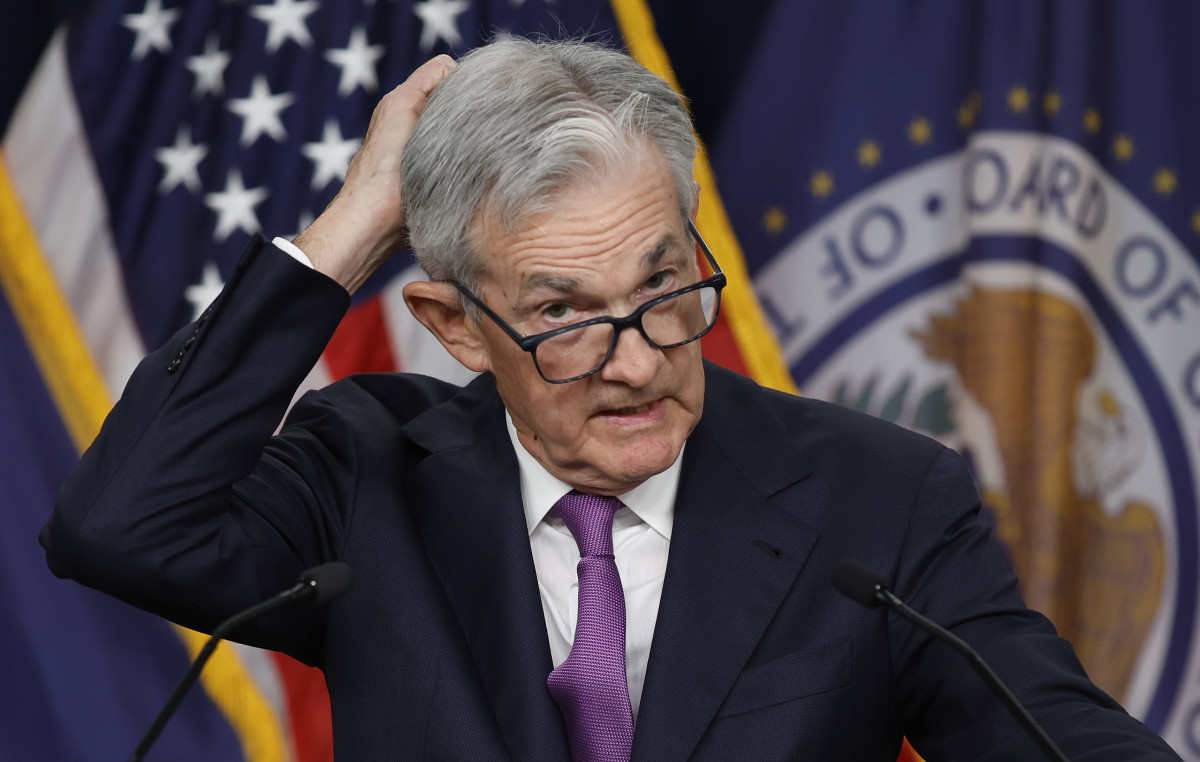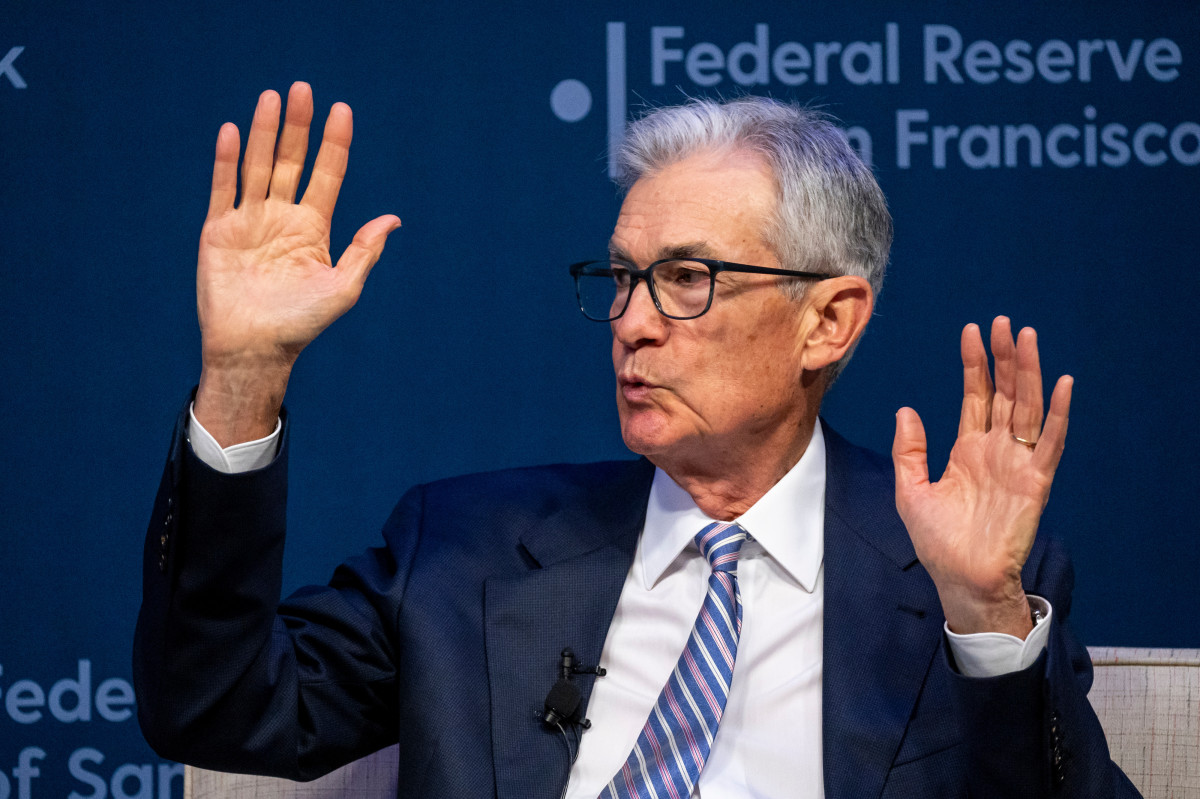
Since perhaps February, the Federal Reserve's rate-makers have been adamant that data — and only data — will guide when the central bank stats to cut interest rates.
With inflation being sticky at something under 3% a year and the Fed goal of achieving 2% annual inflation, the conventional wisdom was there might be one, maybe two rate cuts in 2024.
A few central bankers have suggested there was no need to cut rates at all in 2024.
Related: Analyst revamps S&P 500 target ahead of CPI inflation report
Now, there's talk that rate cuts may come sooner rather than later, and there could be as many as three this year.
Two rate cuts seems to be the more likely possibility, but three is starting to make the most sense, according to two investing experts.

'Get ahead of the problem,' analyst says
"It's all about risk management," Neil Dutta, head of economic research at Renaissance Macro Research, said on CNBC's Closing Bell program on Monday.
Unemployment is starting to rise — slowly, perhaps a tenth of a percentage point in each of the last three months, he said. And inflation is falling and likely to continue to fall.
Bankruptcies — whether business or personal — are rising.
And there's nothing that says the Fed should wait to be absolutely certain, he said. Inflation is slipping. Stock-market gains are increasingly the result of gains for fewer and few stocks.
So, Dutta advised the central bank: Why not get ahead of the problem?
The Fed usually makes dramatic cuts when it's clear the economy is slumping badly.
But he noted, the Fed has cut rates on at least two occasions — in 1995 and 2019 — when a recession was not not unfolding.
Related: Fed's Powell speech, CPI inflation to roil stocks this week
A 'fine' jobs report also shows issues
The economy is showing strains, according to Peter Tchir, a contributor to theStreet.com Pro and head of macro strategy at Academy Securities, a Connecticut money-management firm.
In a Monday post, Tchir suggests the Fed could cut three times in 2024, with cuts totalling 0.75%.
The June jobs report, released on July 5, highlighted Tchir's concern. The domestic jobs report was fine on the surface. That said, he wrote, the jobs market is "no longer robust and certainly not one sided in terms of job seekers like it was for much of 2023."

Then, using the Taylor Rule Utility to argue the fed funds rate is too high. This is a calculator on the Federal Reserve Bank of Atlanta website that lets users calculate what the federal funds rate should using different scenarios.
When he plugs in some assumptions, he came up with calculations of 4.61%, 3.91% and 3.61. All are lower than the current federal funds rate.
More on markets
- I Went on Vacation, and All I Got Was This Lousy Stock Market
- Fed's Powell speeches, CPI inflation to roil stocks this week
- Stock Market Today: S&P 500, Nasdaq close at record highs ahead of Fed Chair testimony
The rising stresses the Fed must watch
Fed Chairman Jerome Powell will testify before the Senate Banking Committee on Tuesday and the House finance committee on Wednesday. The appearances are annual events and let senators and representatives ask questions.
Whether Powell will have noted Dutta's or Tchir's analyses in his testimony is not known.
But these analysts are not alone. Many note rising stress levels in the economy. Here are four signals:
- Bankruptcies were up 28% this year through April, according to American Bankruptcy Institute data. Personal filings are up 28%. Small business filings are up 40%
- Payroll growth is slowing, according to the most recent jobs report. from the Bureau of Labor Statistics.
- Home sales have been flat to falling all year because mortgage rates have not been able to drop definitively below 7%. Home sales declined in March, April and May of this year, and indications are that June saw a pullback as well, Alex Veiga of the Associated Press reported Monday.
- Consumers are not buying Big Macs or Whoppers as readily as before. That's forced McDonalds (MCD) , Wendy's (WEN) and other fast-food chains to promote value-meal deals.
Stocks are hardly excited
These worries are starting to weigh on stocks.
The major averages produced OK gains last week led by technology and related stocks. The other eight sectors of the S&P 500 were flat to lower on the week.
Stocks were basically flat on Monday, though the Standard & Poor's 500 and Nasdaq Composite indexes closed at record highs.
But the fact was the gains were hardly dramatic: 0.1% for the S&P 500 and 0.3% for the Nasdaq. The Dow Jones industrials fell 0.1%.
Related: Veteran fund manager sees world of pain coming for stocks







